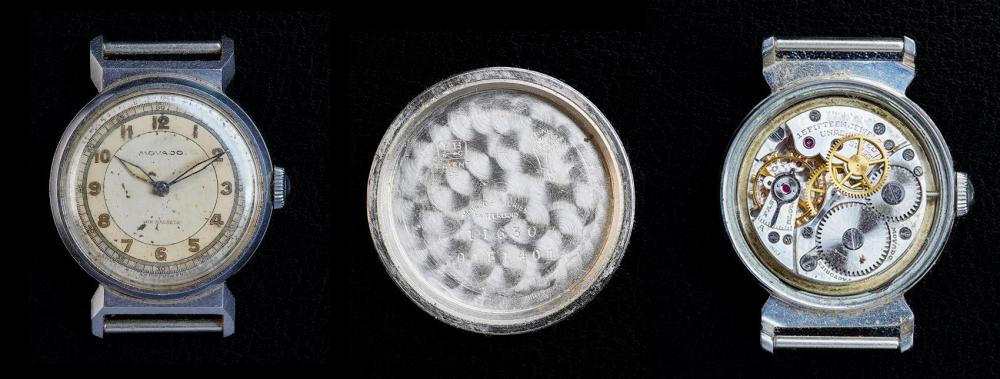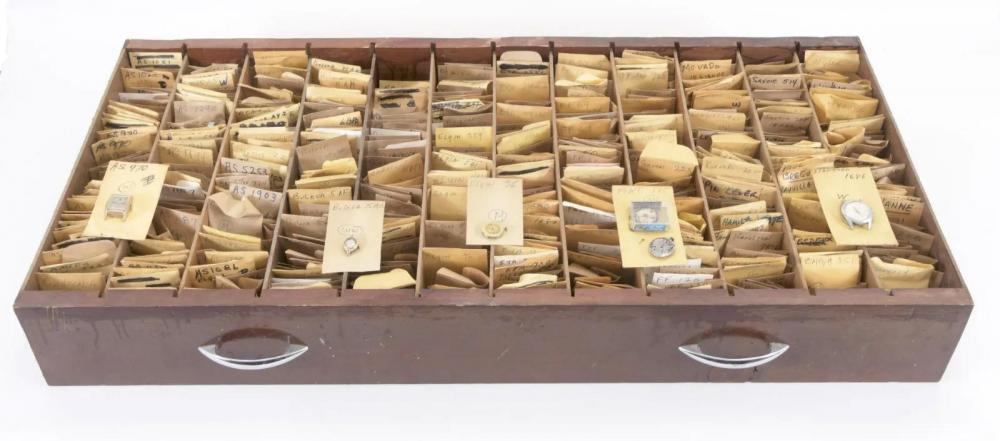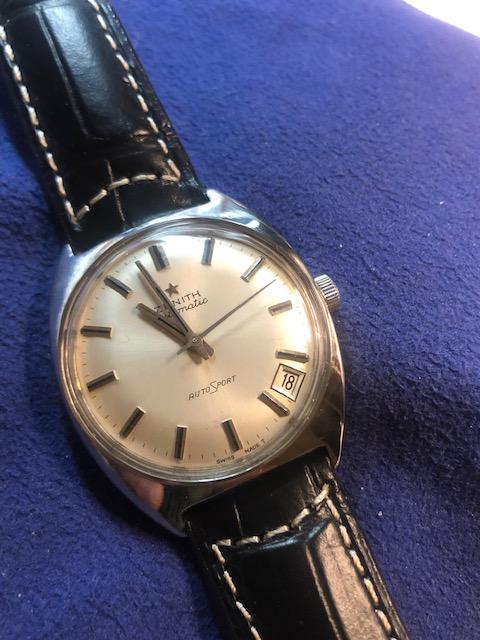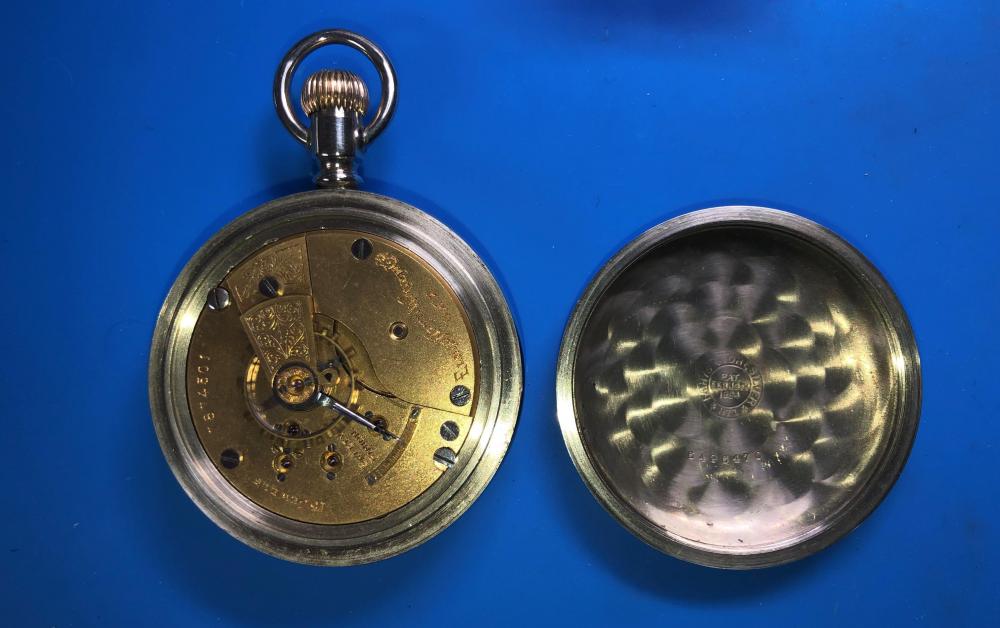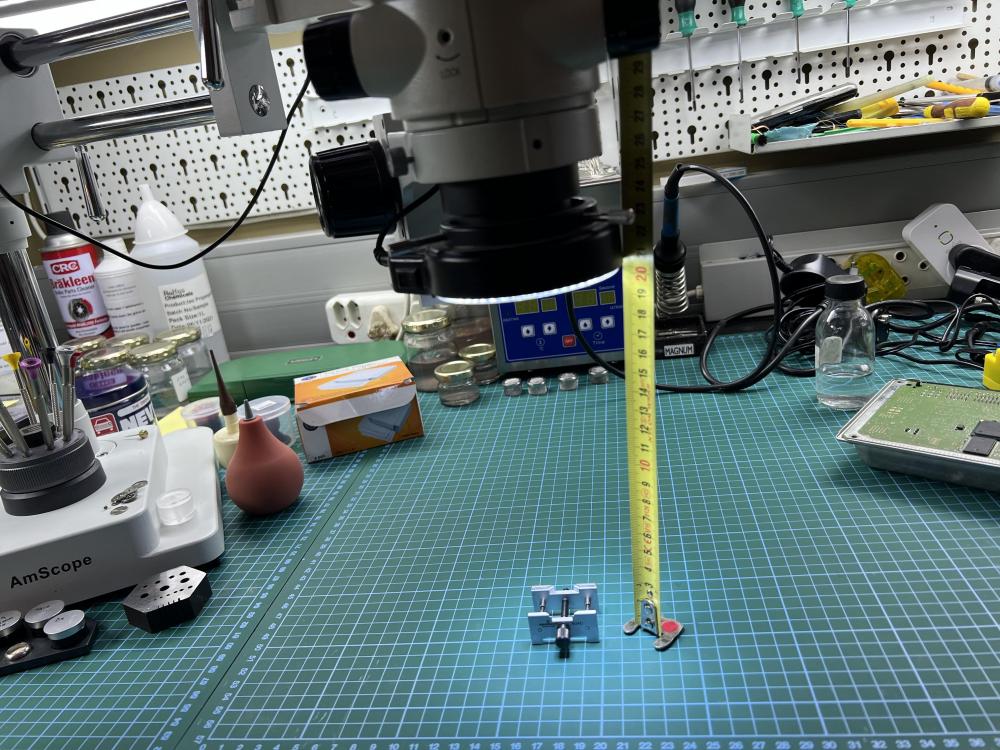Leaderboard
Popular Content
Showing content with the highest reputation on 02/21/22 in all areas
-
I've come across a number that I've been setting aside but have not yet photographed (including a couple of 1940's Longines Sei Tacche watches). A couple that I have taken pictures of: This Movado in a stainless steel Francois Borgel case. I found an ad that called it an "Acvatic" I'm a sucker for alarm watches so I really dig this Vulcain:3 points
-
I won an auction for a very large number of watches from a watchmakers estate. The total cost was around $1,500 but there were easily around 1,000 to 1,500 watches, not all of them complete. They came organized in several large dresser drawers sorted by movement. It's been months and I'm still going through all the watches. I come across one that sparks my interest and then go down the rabbit hole looking into a watch brand I've never heard of, so I still have quite a few to figure out exactly what's in all the little envelopes. Not sure if that counts for the 404 club though.3 points
-
Not just for this application. If I explain while hijacked the discussion and Bill still be people coming along and telegram crazy so just a personal thing I don't think 9010 is a good lubricant. Even though the entire universe in several we don't know about think it's the best oil of all. The shortest version of the why is realistically to use it you should surface treat everything. Because that's actually what the factories do when they use it. There is just enough of an answer and enough the world can think I'm crazy. Otherwise after hijacked the discussion with all my bits and pieces of circumstantial evidence that points to it spreads it was not surface treated. Which is why like 9020 seems to stay wherever you put it and typically I'm doing pocket watches were seen zero sign of amplitude decrease with a slightly heavier oil.2 points
-
Dragging up an old thread but how did you get on? If you have deep pockets Archie B Perkins has a whole chapter in Volume II of Antique Watch Restoration on how to do this and even how to make different shaped roller jewels from round jewel stock. His books go into great detail on how to make all sorts of parts for antique watches.2 points
-
Well, I have to thank you all for the good advice. As mentioned I did split a cannon on my first attempt using the Bergeon tool. On a different and not so valuable project. The center arbor measured 0.69mm with my caliper. I turned mandrel out of stainless on my lathe to 0.68mm. Yep 1/100th mm smaller. I decided to notch out the tool as shown in a post. Slightly smaller than the OD of the cannon pinion at 0.92. After a few delicate crimps I finally got the pinon to grab with friction on my mandrel. This guy was very tight and was not going down on the arbor. A bit of grease and a more convincing push with a staking tool did the trick. Yes is did remove the adjacent wheel. What a surprise.. Perfect friction. A challenge for sure. Thanks again! Hirst.2 points
-
1 point
-
Hi Joe I have somthing similar for close inspection work, I does the job. not tried to work under it as its a bit close to thhands and looking at the screen and working a bit disorientating. Not got the required surgical technique.1 point
-
If whan you get thr movement out of the case , hands and dial off there may be a number on the front plate. Pocketwatchdatabase.com is dedicated to pocket watches.1 point
-
1 point
-
1 point
-
The brocot escapement always look well on these clocks, gives a point of interest. looking good dont forget the picture when cased and running..1 point
-
Imagine the wheel, its long pivot, and the shaft they live in as if they were enormous, and then exaggerate the tolerances. Think like a pencil with a paper plate on the end in some PVC plumbing. If you perfectly balance things with nothing pushing on anything, it'll all rest on whatever shoulders at the top/bottom. In the diagram above, it'll either rest on the leaves of the pinion, or the shoulders of the wheel opposite the elongated pivot. If you push on the edge of the wheel though, it'll lean over to where the wheel is leaning in the direction opposite the point of contact, and the elongated pivot will contact the shaft at that same point; similarly, the elongated pivot will contact on the opposite side of the shaft opposite the wheel where the second hand is attached. Those points of contact are where you want the oil. There's pretty much no way for the shaft to make contact along the middle, because even if it's resting on its side or something, there's always force on the wheel (or it's not turning and doesn't matter). Typically, there are shoulders on the elongated pivot at either end of the shaft. It's easier to manufacture those small areas to a high tolerance than than the whole shaft (also less drag from the oil, etc.), and they just narrow the rest down a bit so it is removed from the equation. Those shoulders are where you want the oil. Pushing through JohnR725's voice to text app, I think he's referring to Fix-o-Drop type treatments. It does something with surface tension of the oil or some such, and essentially, you put it where you want the oil to stay, and then oil on top of it. He's saying 9010 requires this to stay in place. Sounds like 9020 stays where you put it more reliably in his experience. First I've heard of it, but he's way more experienced with this than I am. I've not been around long enough, done enough watches, and especially not done enough that I'd have reason to come back to to have seen 9010 creep. Where I'm at, and for what I'm doing, I've got a bottle of 9010 that I'll use up without the Fix-o-Drop until I see a problem or run out... Or maybe John goes into more detail. I can be convinced of anything provided sufficient evidence/compelling arguments/etc.1 point
-
For some perspective by picture: That's a 7x-45x Stereo Amscope with a 0.5x Barlow lens and 10x eyepieces. It shows a working height of 200mm and that Bergeon movement holder just fills the complete sight picture in the microscope on the lowest magnification. I tried taking pics through the eyepieces but my phone camera doesn't want to play along I got it years ago for working on automotive engine control units as my day job (lots of really small parts on those; smaller than watch parts to be honest) and I use it pretty much all day every day. Soldering, hot air rework, that kinda thing. When I got into the watchmaking hobby I simply carried on using that microscope as I'm comfortable with it. I've tried watchmakers eyeglasses but it's no where near as convenient as working with the microscope (to me at least) so I don't bother with eyeglasses at all anymore. It's great because I can work on a standard height bench and I sit upright to look through the microscope, not hunched over as I would wearing eyeglasses.1 point
-
Here's my take on tools. When starting, and not know if one will continue or not and what exactly will need to do, it's useless to go for brand tools or spend big just because "they will last a lifetime". Be reasonable, buy value, remember that is the person that does the job, not the tools. That will let you have more budget to buy more tools or practice watches.1 point
-
Silicone polishers are used a lot in the dental industry. I've been using them since student days, so that would be almost 40 years. They are ok for polishing small objects that do not have flat mirror finished facets. Because of the small diameter of the tools, they tend to create dimples and swirls in the finish. They have to be used with great care to avoid rounding off sharp line angles. The rule of thumb is to use the largest diameter tool possible for the job.1 point
-
1 point
-
And decided that "there is no place like home." After stepping away from this for a few days, I put my loop on and scanned my skin drawer using methodical sweeps. Lo and behold! There it was...the missing pallet jewel. So, using the technique offered by my wise friends on this forum, the pallet is back in place and the watch is now running!1 point
-
Remember: shellac dissolves in alcohol. You can ease up to your desired level of clean with an alcohol soaked Q-tip or similar. I've noodled on whether or not it might be possible to do the reverse as well: rather than melt the shellac and glob it on, dissolve it and brush it on in thick coats sort of. I mentioned in another thread recently that I also dabble in luthiery/fine woodworking, and French polish is one of my go to finishes. A French polish is mostly a technique, but the material aspect is just shellac dissolved in ethanol, and the terminology is "X# cut", i.e. 2# cut which is 2 pounds of shellac flakes to a gallon of ethanol or something along those lines. It doesn't keep, so a gallon is way too much for my purposes, hence the fuzziness on the specifics. It's definitely more art than science, so you get quite a bit of wiggle room. The Brits probably have a name for things of the sort, and it probably rhymes cognitively with "that'll do". Anyway, my thought was that it might be possible to make up a really heavy cut, and brush it on, or maybe use a small dropper/pipette (utilizing capillary action rather than an actual drop). You'd get better penetration into the joint via capillary action (assuming it's not too viscous), while adding almost no mass or mess. It might take a few applications to get where you want, and you'd be wasting the majority of your shellac/hooch, but as LWS discovered, shellac is dirt cheap on the scale we're talking here. The booze is a bit more pricey, but shellac is totally non-toxic and edible (it's often used to coat apples to keep them shiny and marketable), so....1 point
-
Nice! Just keep at it and don't lose hope. It also helps to take a break and do something else as enlightenment is usually only a few hours away. I've just been fighting through two movements with screwed up hairsprings. And I'm the one that screwed both up by trying to adjust Beat Error and have the tweezers slip. Lots of swearing, crying and gnashing of teeth. I think I ended up in the fetal position under my bench at one point (but only once). I consulted Mark's video's and training videos religiously. It truly is intimidating doing work on hairsprings when you starting out like me, but I learnt a lot taking the hairsprings off the bridge and figured out how to identify rubbing of the coils against each other and/or the bridge on a Timegrapher. I can kick myself in the nuts for screwing up, but I'm glad I did it as it gave me more insight into how hairsprings actually work.1 point
-
No 4, tweezers. Gives you excellent control over the workpiece. If you don't drop it and use it for hairspring only، it will last a lifetime. I drop the spring on a white sheet of paper to see details in better contrast. Good luck1 point
-
1 point



